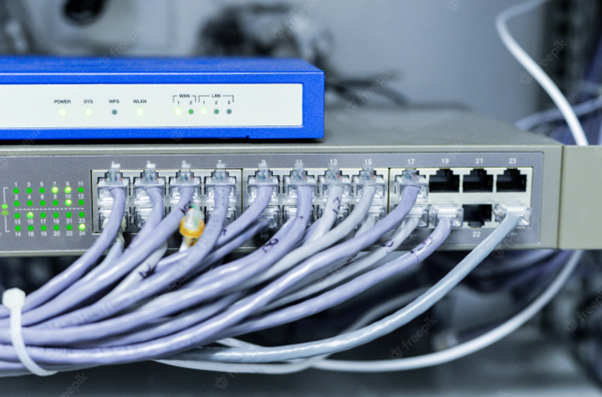A switch is a high-speed networking device that receives incoming data packets from multiple input ports and redirects them to the intended destination on a Local Area Network (LAN). It is a small device that allows data packets to transfer between multiple network devices such as computers, routers, servers, etc.
The switch plays an essential part in most modern ethernet Local Area Networks. Mid-to-large sized LANs contain several linked managed switches whereas small office/home office (SOHO) typically uses a single switch or an all-purpose device like a residential gateway to get access to services like DSL or cable Internet
A switch is an intelligent device where it can learn the physical addresses of the devices that are connected to it. It stores physical addresses called Mac Addresses in its table. So, when a data packet is sent to the switch, it is only directed to the intended destination port.

For example, if PC A would like to communicate with PC B, as the data packet arrives at the switch, the switch will then look at its table of MAC Addresses and matching ports to deliver the data to the correct port. Then, the data packet will only go to its intended destination, which in this case is PC B.
Switches have many features that make them unique. One of them is the bandwidth of the switch support. Ethernet network switches support data transfer speeds such as 10/100 Mbps Fast Ethernet or Gigabit Ethernet (10/100/1000) standards.
In the networking world, people often compare switches to hubs. But what’s different between both networking devices is that switch is faster compared to a hub. Switches run on a full-duplex, meaning devices can communicate by sending and also receive data across the network; this is where switches have the upper hand on a hub as it doubles the speed of the network when compared to hubs, which only support half-duplex.

